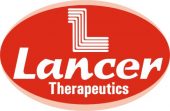For small molecule finished forms the manufacturing process is typically made up of a combination of specific unit processes chosen according to the physical and chemical characteristics of the API. Below are brief descriptions of typical manufacturing processes used for small molecule finished forms.
Dry Granulation; Compaction of a low density powder to a granule. The roller compaction process consists of a combination of screw feed, compaction and milling systems. Screw feed system considerations include vertical, horizontal, tapered or angular screw feed mechanisms. Roll system design options include smooth, serrated or pocketed roll surfaces. These considerations combine with screw feed speed, roll speed and roll pressure and the specific blend characteristics to determine the compaction performance at the slip zone, nip zone and release zone.
Hot melt extrusion is utilized in pharmaceutical solid oral dose processing to enable delivery of drugs with poor solubility and bioavailability. Hot melt extrusion has been shown to molecularly disperse poorly soluble drugs in a polymer carrier increasing dissolution rates and bioavailability. The process involves the application of heat, pressure and agitation to mix materials together and ‘extrude’ them through a die. Twin-screw high shear extruders blend materials and simultaneously break up particles.
High shear and wet granulation are commonly used for densification, to improve flowability, content uniformity or wettability or to improve dispensing qualities.
Fluid Bed Granulation: Top spray, bottom spray (Wurster) and rotary (tangential spray) are commonly used in the food and pharmaceutical industries. Top spray granulation produces highly porous particle with good dispersibility and compressibility. Bottom spray is commonly used for modified drug release by layering API and coatings because of its film formation capability. Rotary granulation methods are Used pellet formation and pellet coating.
Drying: Understanding and controlling moisture content of powders is critical to many pharmaceutical processes. Fluid bed or laminar flow drying conditions impact on both physical and chemical characteristics of powder and granules.
Hot melt extrusion is utilized in pharmaceutical solid oral dose processing to enable delivery of drugs with poor solubility and bioavailability. Hot melt extrusion has been shown to molecularly disperse poorly soluble drugs in a polymer carrier increasing dissolution rates and bioavailability. The process involves the application of heat, pressure and agitation to mix materials together and ‘extrude’ them through a die. Twin-screw high shear extruders blend materials and simultaneously break up particles.
Pharmaceutical Milling is the process of using rotary cutters in pharmaceutical equipment machinery to remove materials from a workpiece by feeding in at an angle with the axis of the tool. Milling is used in pharmaceutical processing to break down and de-agglomorate powders and granules to a specific particle size range. The physical characteristics of the resulting powder can influence downstream processing steps such as blending and tablet compression and also in-vivo performance. Typically the material to be filled is fed through a hopper, through gravity or vacuum feed, and passed through a milling chamber. The milling chamber consists of rotating sharp or blunt blades and a sizing screen. The type of blade, rotation speed and the dimensions of the pores of the sizing screen are all critical in producing a specific particle size for a product. The characteristics of the milled material are often critical to subsequent processing steps and are routinely tested in line or as an intermediate bulk.
Compression of granules or powder into tablets is an efficient process for producing a solid dose medication. Key considerations for a tablet compression process are tablet press dwell times, processing speed in tablets per hour (TPH) and compression force.press speeds nd the specific blend characteristics are some of the major factors considered when designing a tablet compression process.
Tablet coating equipment options include batch process coating pan, off-press continuous coating or continuous processing. Equipment consideration also include type of pan, solid pan, fully perforated pan, or semi-perforated pan.
Pharmaceutical encapsulation is the containment of a solid or liquid dose of a drug in a soft shell or hard pre-formed capsule. Hard and soft capsules are typically made from gelatin but alternatives such as HPMC are available. Capsule fill weight is a critical attribute in encapsulation and various real time fill weight monitoring techniques such as NIR and vibrational spectroscopy are used, as well as in line weight checks, to ensure product quality.
There are a large range of semi-solid and liquid formulation techniques employed in pharmaceutical manufacturing. Self-emulsifying pharmaceutical formulations are used to improve the oral bioavailability of poorly soluble drugs, typically increasing Cmax and decreasing Tmax concentrations. These formulations consist of a surfactant, lipid and cosolvent in varying concentrations which form a microemulsion in the presence of water. They are typically presented in gelatin capsules. These formulations are commonly known as Self Emulsifying Drug Delivery Systems (SEDDS). Simple liquid formulations consist of a drug in solution presented in a capsule. The solvent is determined by the chemistry and required concentration of the drug. Precipitation of the drug can be triggered by the dilution of the capsule at specific pH ranges.
